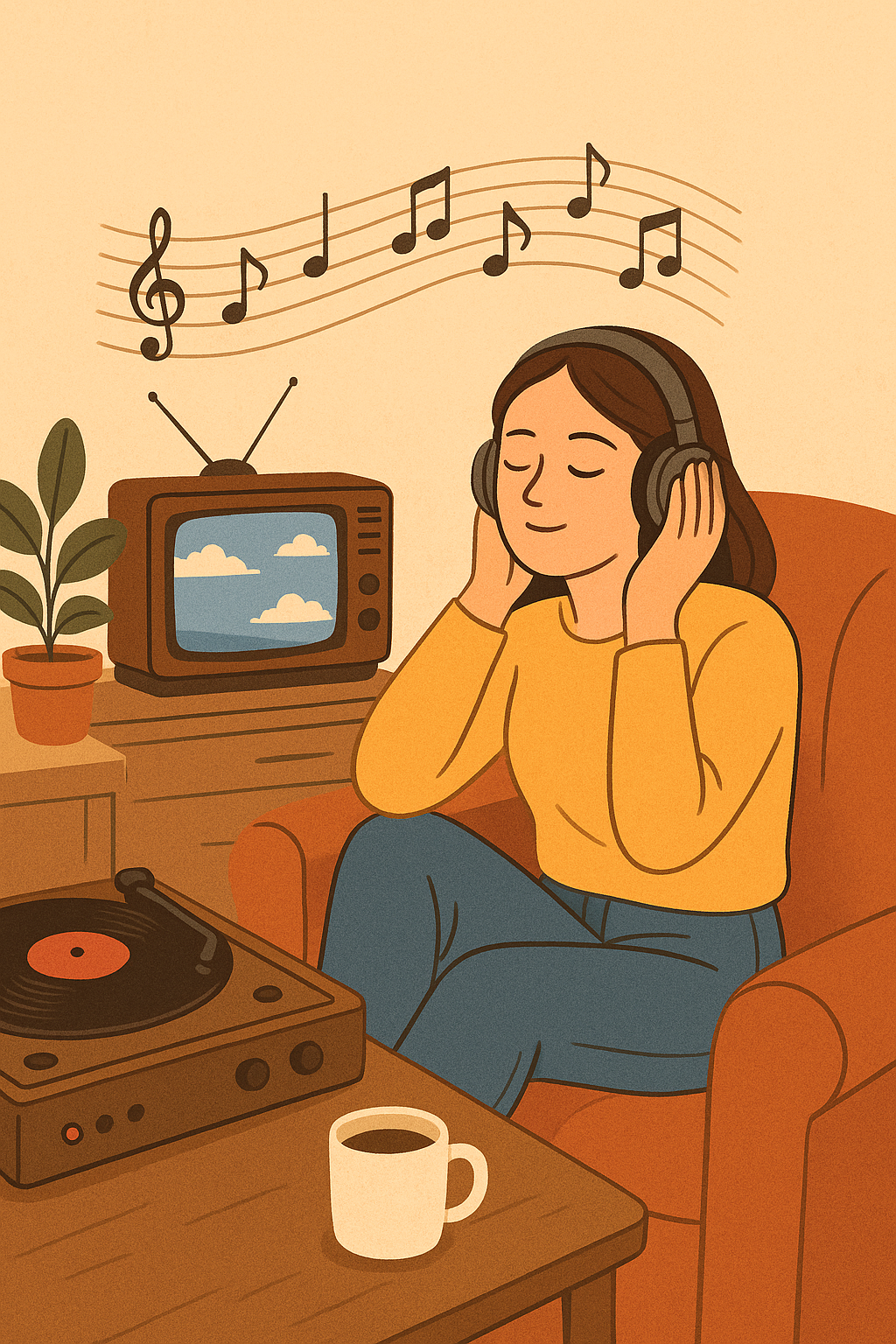How Nostalgia Became Our Comfort Zone
Introduction
There’s something magical about the past — the songs we grew up with, the shows we loved, the places that still feel like home in our memories. In a world that’s constantly changing, nostalgia offers a quiet escape, wrapping us in a sense of warmth and familiarity. It’s where we go when life feels too fast, too uncertain, or just a little too heavy. But as comforting as it is, living in the past can sometimes hold us back from fully embracing the present.

The Psychology of Nostalgia – Why We Crave the Past
Nostalgia is not just an arbitrary feeling; it is our brain’s response to seeking comfort and safety in times of uneasiness or discomfort. When we reflect upon simpler times-childhood summers, favorite snacks at school, or the song we played constantly-we are not just reminiscing; we are at once emotionally transported and re-centered in a safe space. Psychologists have suggested that nostalgia can elevate mood, increase feelings of self-worth, and build a sense of connection to others. When stress or loneliness occurs, our mind tends to reach for those memories; both as a warm blanket and furthermore because it represents a safe space. The past is a safe past, a place we know has not changed in contrast to the present that can feel chaotic and unpredictable. But this nostalgia is not to escape the present-rather it is about having a level of control or stability when everything else can be so fleeting. Nostalgia reminds us of our past identities and helps us even feel more secure in our current identities.
The Digital Renaissance – How Media Allows Us To Keep Our Memories Alive
We now live in an electronic age—a time machine of sorts—that, through our devices, can always take us back to our prior selves. We look for any “throwback” post on social media, check retro playlists on Spotify, and even are encouraged to tune into that re-booted TV series. Streaming services have recently brought back so many classics, brands are now redoing all of the old looks from yesteryear, and social media locker algorithms know what memories we are least likely to pass over with a brief smile. Even the aesthetics—grainy photo filters, film cameras that were so cumbersome and lovely, and even fonts from the 90’s—always allow us some modicum of pragmatic vicarious sense of memory. Nostalgia in many iterations has become a form of our electronic online identity that expresses who we are and what we may or may not want to miss of our past. Technology that was once identified as our future is now somewhat of a paradoxical avenue to connect with our past selves. Nostalgia indeed connects the present self to the prior self and reminds us, even as trends change, and the world moves increasingly faster, we can perpetually feel encompassed by both the now and some of the feelings of our favorite memories. Nostalgia has undoubtedly been incorporated into our digital sphere, through pixels and playlists, always promptly bringing forth some sense of familiarity along with whatever good old days there were.

Escaping the Chaos — Nostalgia as a Way of Coping
Life today is fast—constant updates, comparisons, and a firehose of news. But in the chaos, nostalgia becomes our quiet place. We listen to old songs, eat childhood snacks, or watch a feel-good movie to remind ourselves of a time when life seemed easier, slower, and lighter. These little rituals are not just a habit but an emotional tether to help us breathe again. When life seems out of control, old memories provide stability and a sense of belonging. That’s why we turn to old sitcoms or our hometowns when life feels heavy. Nostalgia softens life by providing a safe way to escape without demanding anything from us. Nostalgia takes us back into the moment that felt relaxing, fun, innocent, or safe—feelings that are easily lost as adults. In its simplest terms, nostalgia is our own way of saying, “You’ve made it through before. You’ll make it again.”
When Nostalgia Becomes a Prison — A Price we pay for Living in an Idealized Past
Nostalgia, while comforting, can slowly envelop us if we perpetuate that level of comfort. At times its rosy views of the past can idealize it so much that the present has a dull thing in comparison, and we find ourselves pursuing those feelings when reliving those moments are impossible. Nostalgia can also become a prison of strategic hesitance, and we want them to be that we are not going to succumb to change or new experiences, either because of fear or avoidance. The reality is every period feels like a golden one in retrospect, and the present period will become “the good old days” to some future individual. It is perfectly healthy to look back at a period or a feeling, but just for a “look back.” Growth occurs when we take our sentiment, and warmth, of possibly yesterday and use them to cultivate better memories in today. Nostalgia should serve as a bridge not a lost hiding place, making it to remember how far we have come but not keeping us stuck in it. Because the true comfort is not just in who we were, but also becoming who we are to be.
Conclusion
Nostalgia serves as an important reminder that comfort doesn’t always reside in the new; it often dwells in the memories we cherish most. It is a generous reminder of the person we once were, serving as an anchor during uncertain times in our lives. And while nostalgia is a beautiful thing, the true beauty lies in taking those feelings from the past to make new memories worth being nostalgic about. The ordinary moments we create today will eventually turn into memories of nostalgia tomorrow.
